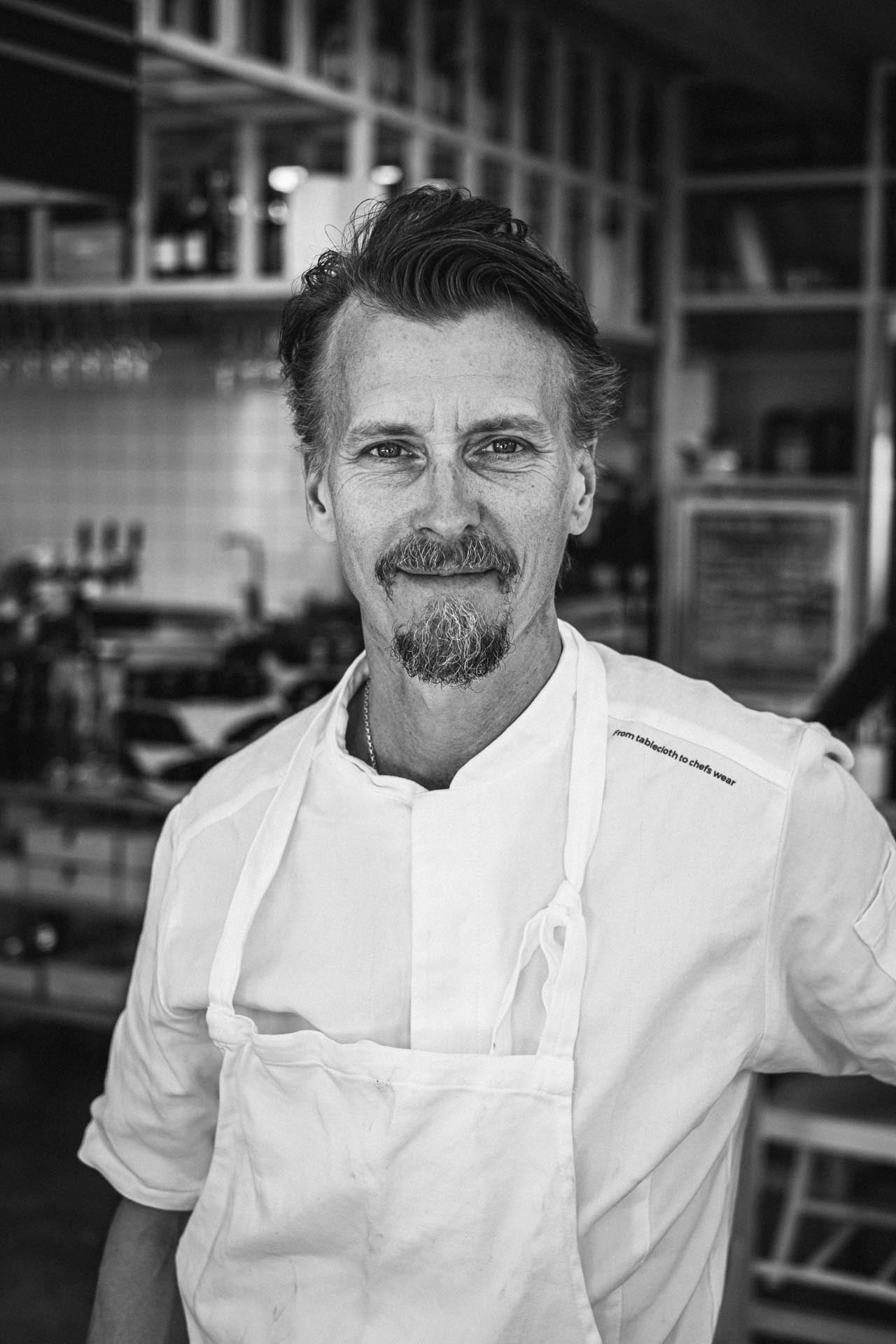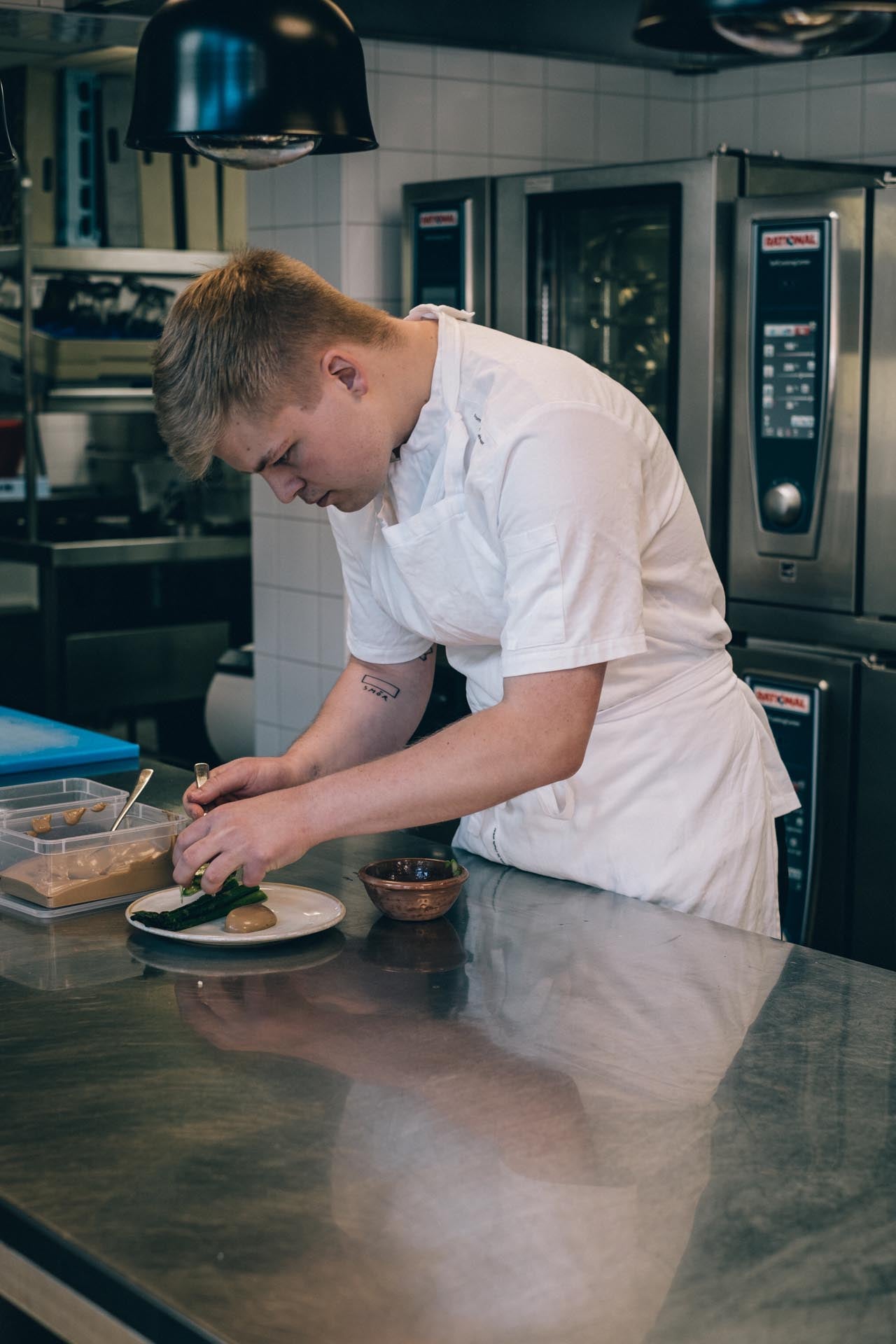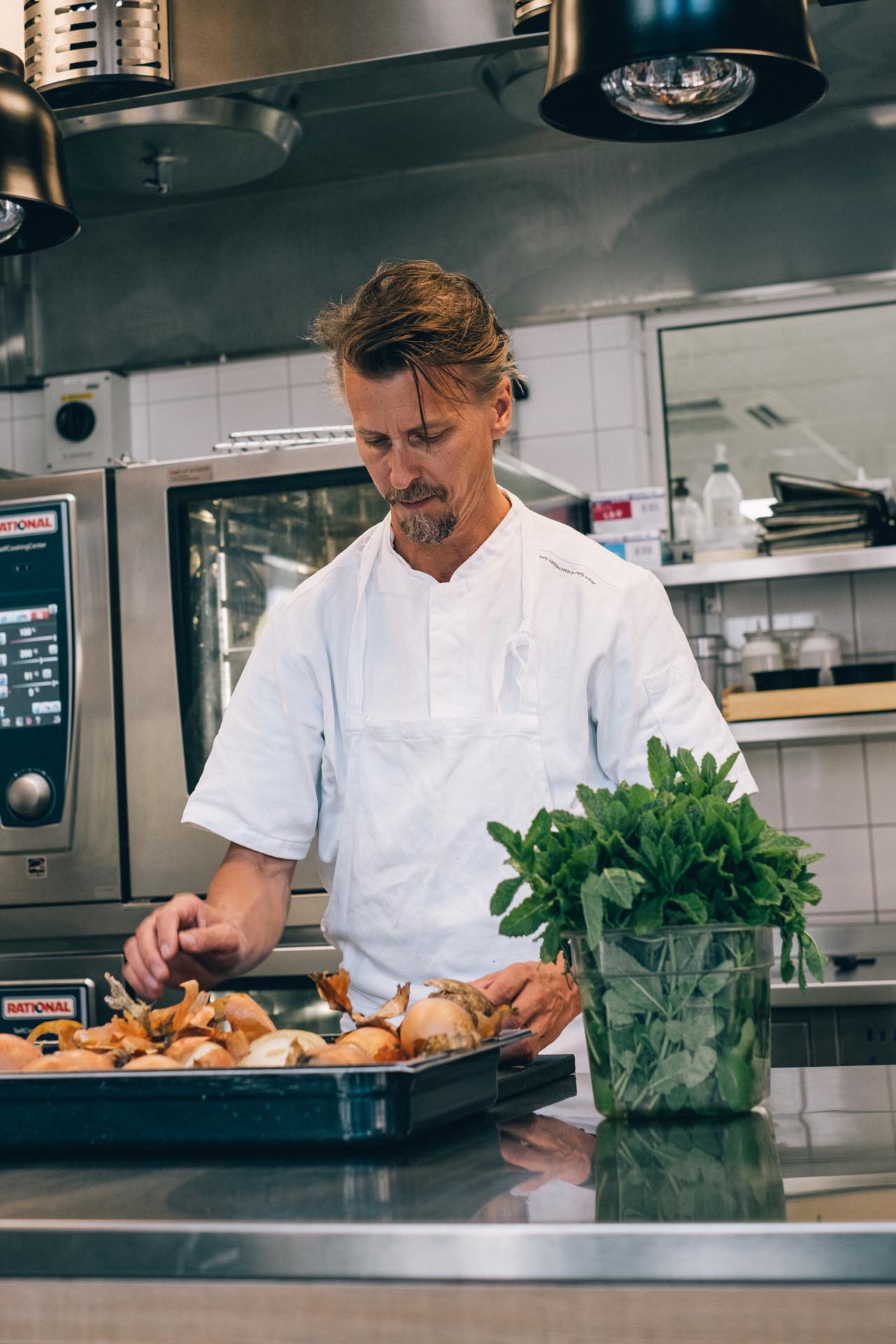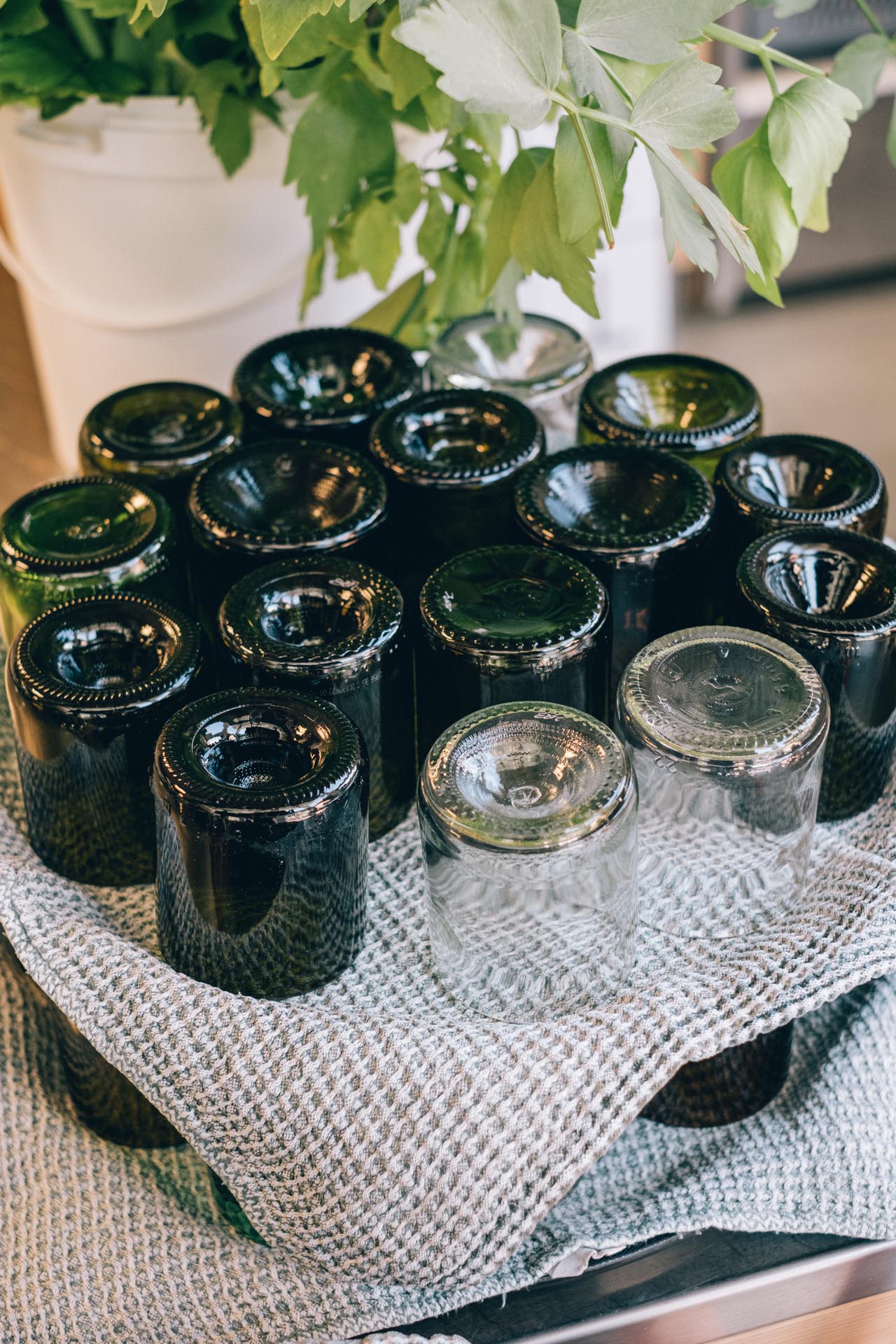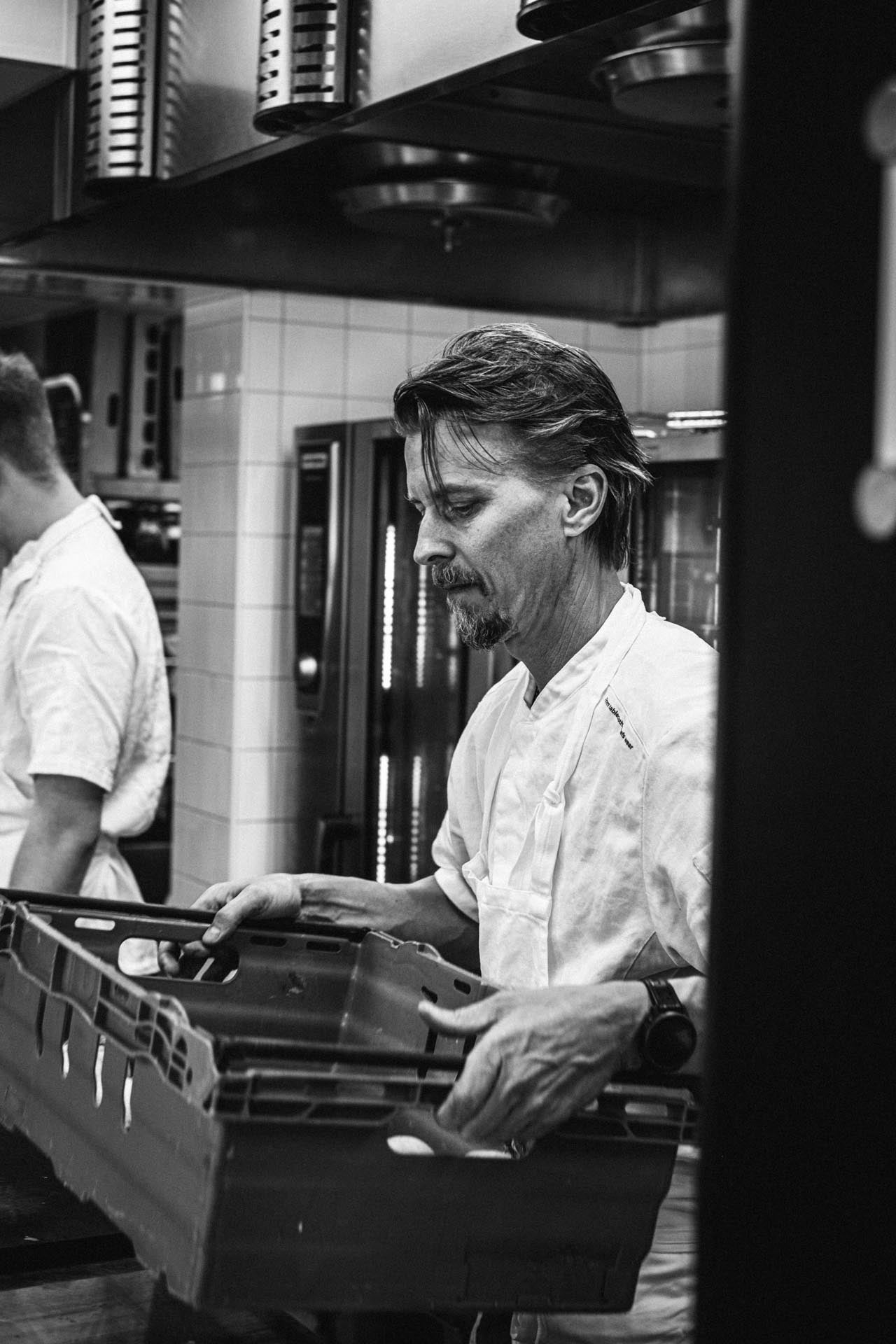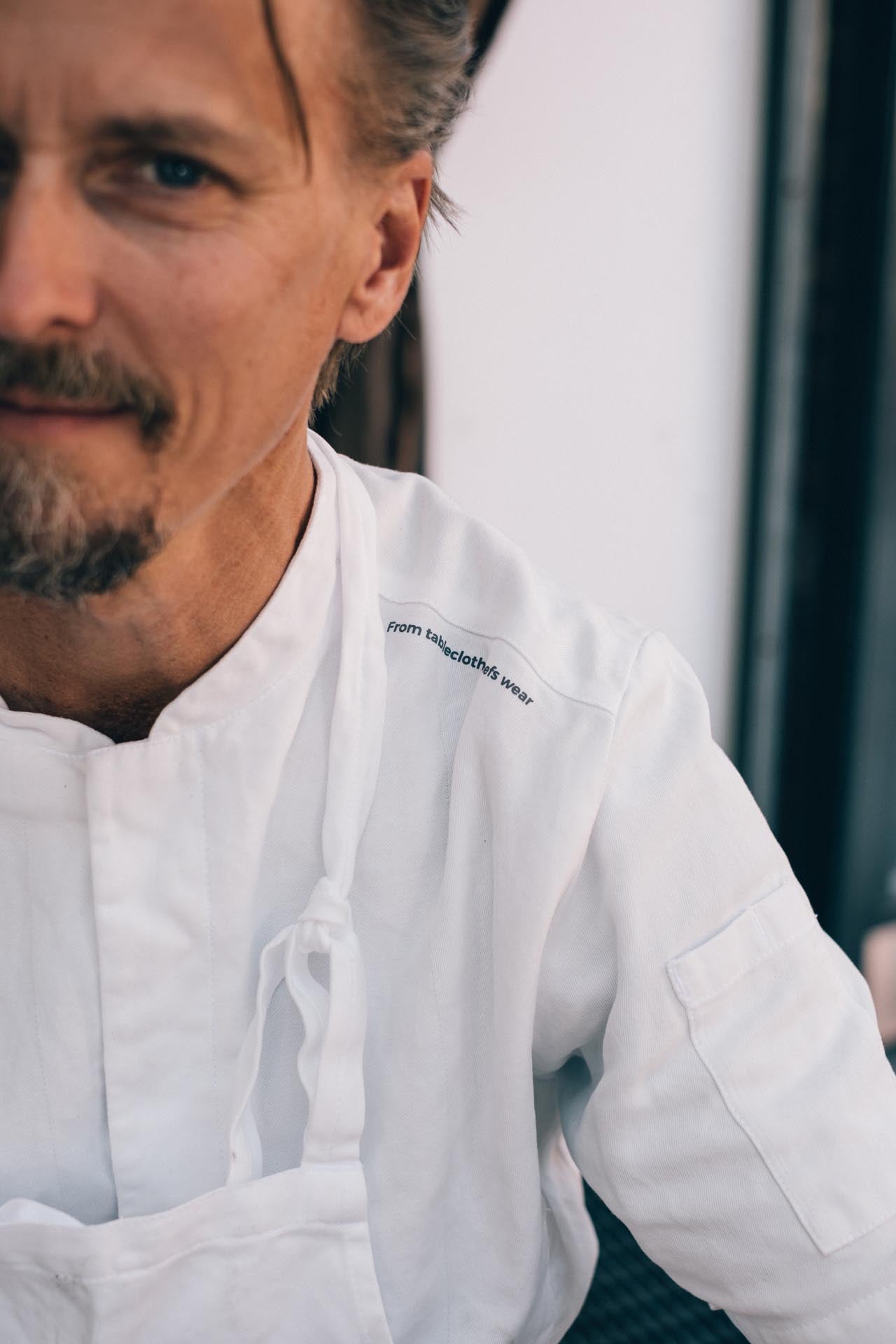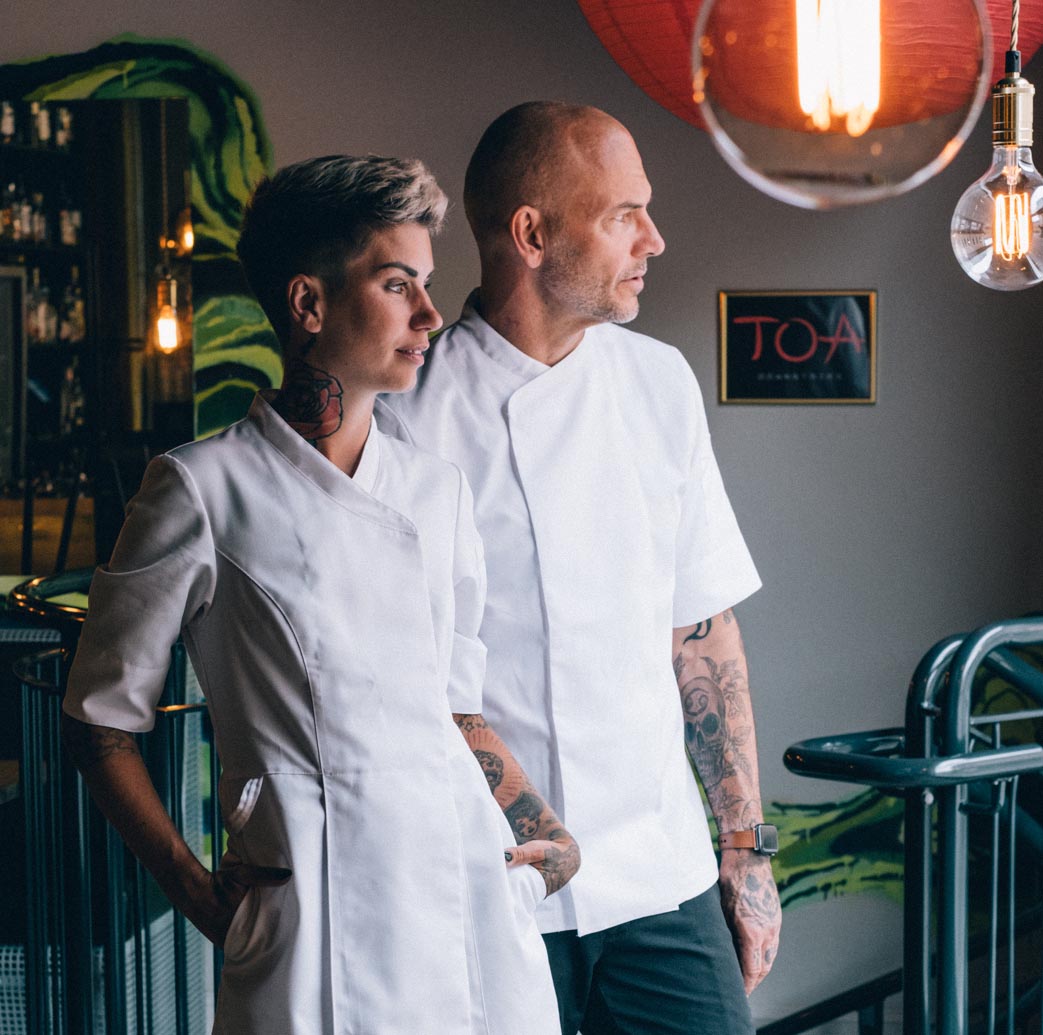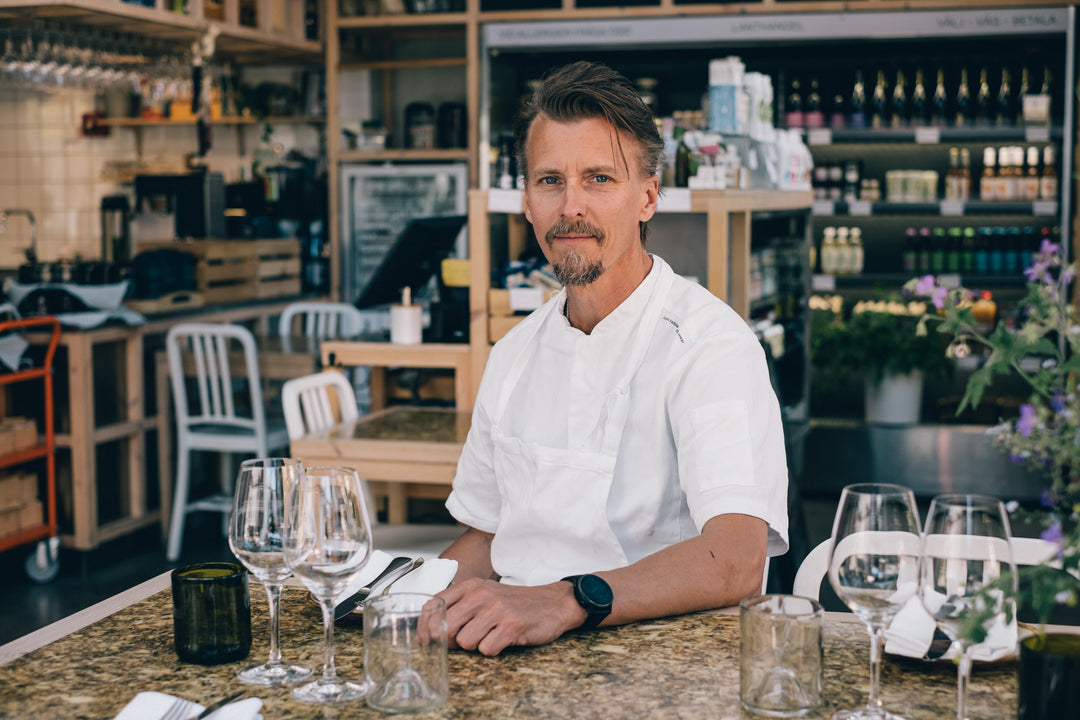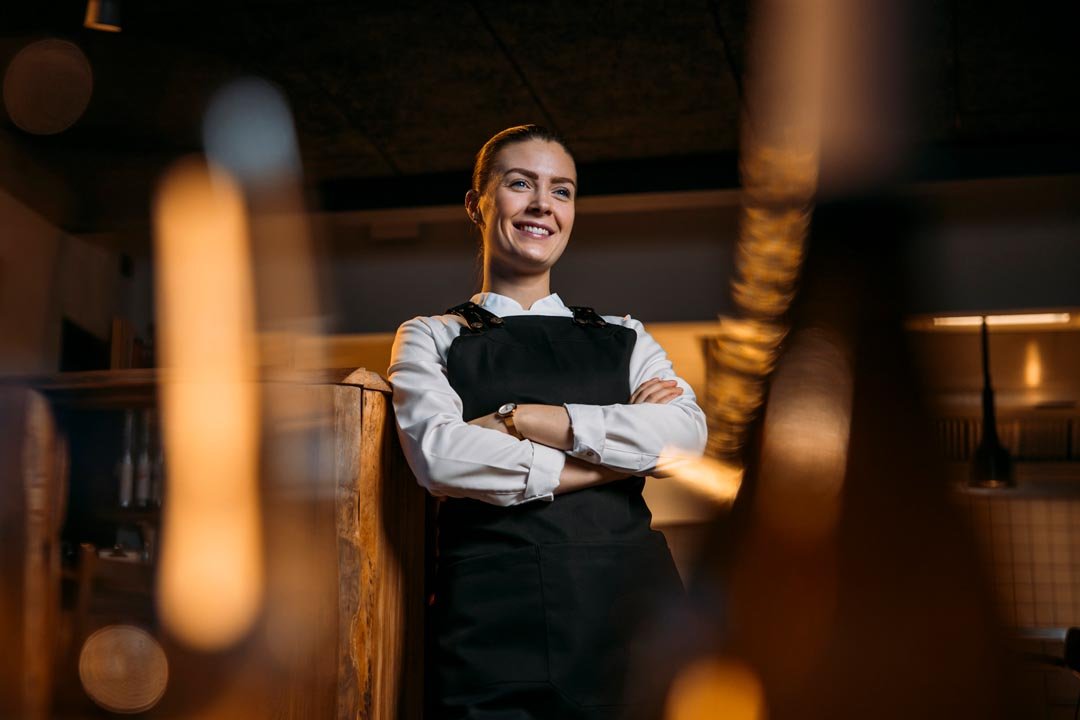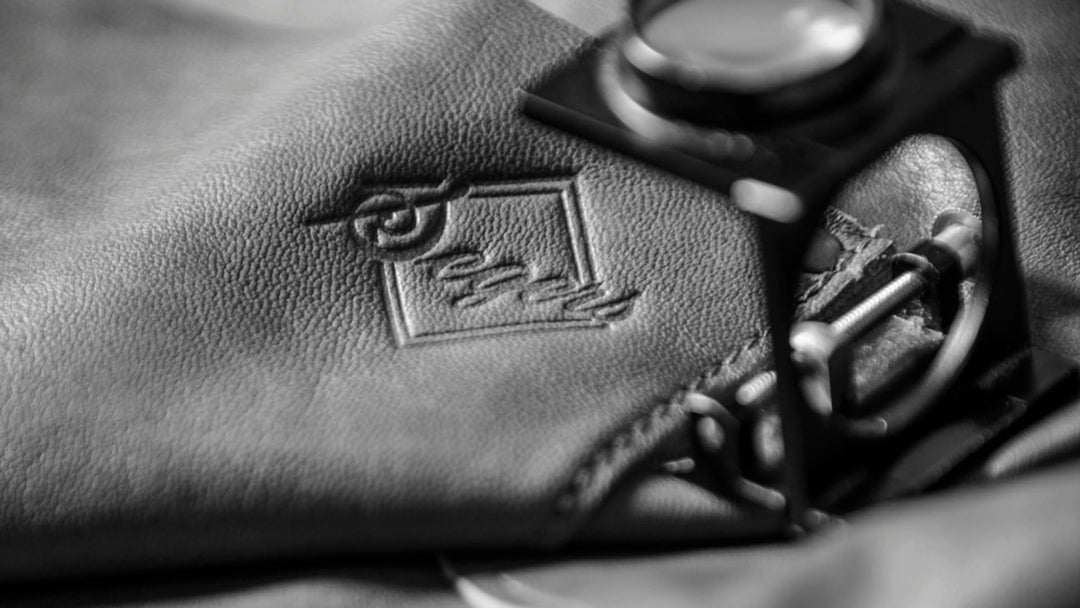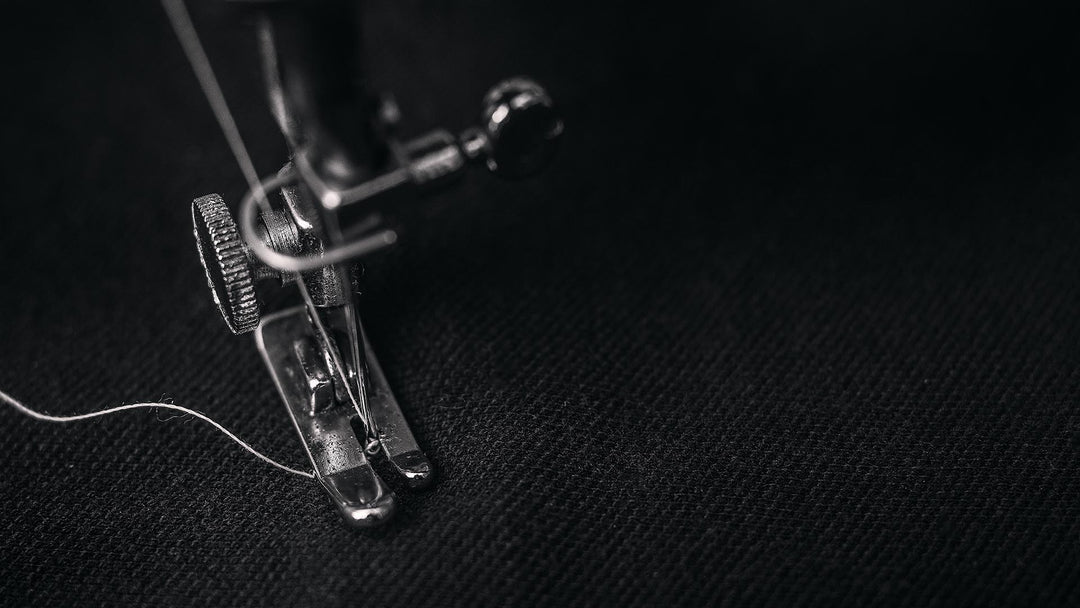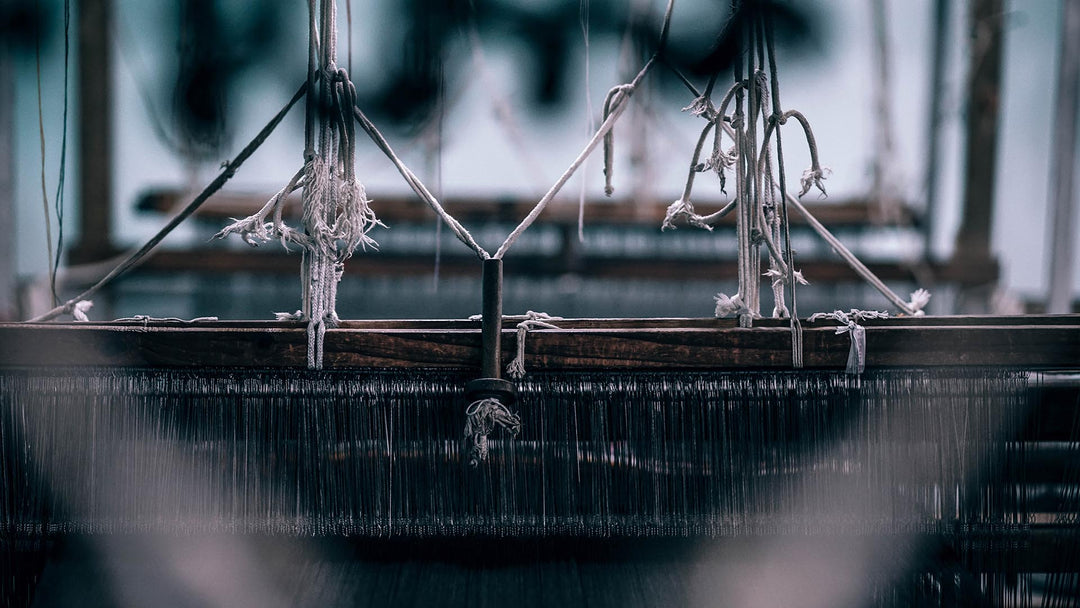From tablecloth to chefs wear
What do you actually do with stained, old, and well-worn tablecloths that have too many service shifts on their CV? You turn them into chef’s jackets. Together with the textile service provider Elis, Segers is testing a new upcycling project with textiles that have previously had a different life. Test pilot Paul Svensson has tried it out and gives it a thumbs up!
Restaurant life can be tough – even for a tablecloth. Spills, tight laundry schedules, and frequent transports take a toll on textiles, and they don’t last forever. But now, there’s an opportunity for retired tablecloths to make a comeback in the restaurant scene while simultaneously reducing the industry’s environmental impact. Together with the laundry service provider Elis, Segers has undertaken a project to create new clothing from old, worn-out tablecloths. It’s upcycling instead of recycling. It involves crafting new restaurant attire from textiles that previously served as tablecloths.
– Manufacturing new clothing from old tablecloths actually goes against all the processes and truths of conventional textile production. Still, we need to find new ways to reduce environmental impact. At the beginning of the project, we faced many challenges, but along the way, we’ve gained just as many insights into how future circular products can be developed and produced, says Peter Frank, product manager at Segers.
Chef Jackets and Table Napkins
In an initial pilot project, both chef’s clothing and table napkins have been produced. Each new garment has been equipped with a chip to collect essential data about their usage, which will be evaluated in the product development. Test pilot for these newly revived garments is Paul Svensson, a chef, restaurateur, and cookbook author with a focus on sustainability.
In an initial pilot project, both chef’s clothing and table napkins have been produced. Each new garment has been equipped with a chip to collect essential data about their usage, which will be evaluated in the product development. Test pilot for these newly revived garments is Paul Svensson, a chef, restaurateur, and cookbook author with a focus on sustainability.
– We’ve been working in these clothes for a while now, and they are super comfortable. The staff reports that the clothing works really well during service, and the napkins receive extra attention from our guests,” Paul says. For several years, Paul had been searching for a solution where existing materials could be used for the staff’s workwear, but the upcycled garments available in traditional clothing stores didn’t provide the durability required in the restaurant industry. Moreover, there were only a few suppliers willing to go the extra mile to offer sustainable alternatives to the restaurant industry.
– The industry needs a combination of stylish, durable, and environmentally conscious clothing. Apart from aprons made from upcycled materials, we hadn’t found any suppliers offering something similar in chef’s clothing – until now, with Segers and Elis, Paul adds.
Unique Differences as Part of the Charm
One of the challenges in production has been creating identical products from a textile raw material that is far from uniform. Bleaching the clothes to achieve an identical look is out of the question, as the method has an adverse environmental impact.
– If you place two chefs next to each other and are aware of what to look for, you might be able to detect minor shade differences in these chef jackets. But how often do guests notice such things? And is it really a problem? There’s a good reason why the clothes aren’t identical. Nature is full of differences, and if we can find various shades of carrots charming, we can learn to appreciate the same in chef jackets or napkins. I don’t see it as a problem, says Paul.
Sustainable Clothing for More
For Segers, the next step is to evaluate the project together with Paul and Elis. The hope is to scale up and offer these newly revived garments to more players in the industry who want to become more sustainable.
– A project like this stirs the pot and requires new solutions in collaboration, logistics, product development, and production. Change can be uncomfortable, but this project has been nothing but fun. In the end, it’s about being able to present products that we’re proud of and that contribute to a more sustainable industry. We want everyone to have the opportunity to work in these clothes, says Peter Frank at Segers.


